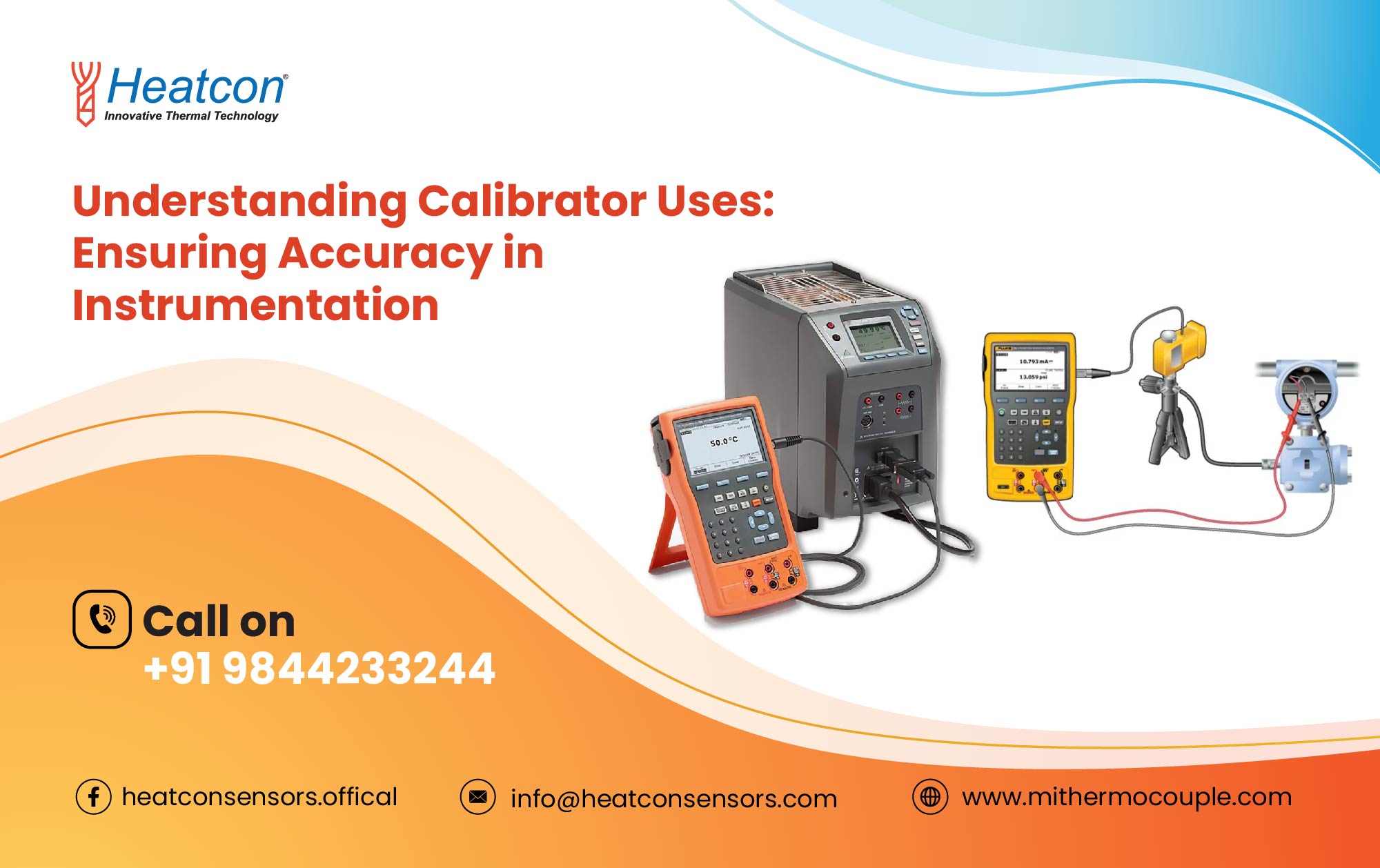What Is Instrument Calibration?
Various industries utilize instrument calibration as a critical process to ensure the accuracy and reliability of measuring instruments. Whether you talk of laboratories, manufacturing units, healthcare segments, or any other such sector reliant on precise measurements, calibrators tend to play a very pivotal role in maintaining the accuracy of these instruments. Calibration tends to involve comparing the readings of a particular instrument against a known reference standard for identifying & rectifying any deviations in the accuracy.
Working of Calibrators
Calibrators work by providing a known input to a particular instrument that is under test and then comparing its output against the standard input. They can help in stimulating specific conditions/values for verifying the accuracy of the device(s) that are being calibrated. By adjusting the settings of the instrument based on the comparison results, these calibrators help in ensuring that the DUT (Device-Under-Test) provides accurate measurements within their specified tolerances.
Understanding the Process of Calibration
The calibration process typically involves several steps, which are as follows:
- Assessment: Understanding the instrument’s specifications & calibration requirements.
- Selection: As per the instrument type, the technician(s) have to select the required calibration parameters which can include pressure, current, voltage, temperature, etc.
- Reference: The technicians have to then input the known reference values, which the DUT is supposed to ideally measure/respond to. These reference values tend to serve as the benchmark for such a comparison.
- Preparation: Ensuring that the calibration equipment has been set up correctly and is functioning accurately.
- Adjustment: Making necessary adjustments to the specific device under test to align it with the reference standard.
- Validation: Verifying the accuracy of the DUT after adjustments and then ensuring that it meets the required standards.
- Documentation: Recording calibration data and issuing a calibration certificate for documenting the entire process and the received results.
Frequency of Calibration
The calibration frequency depends largely on several factors, including the instrument type, its criticality in operations, environmental conditions, and regulatory requirements. Instruments used for critical applications or prone to drift may require frequent calibration, while less critical ones can have longer intervals between calibrations.
What Does a Typical Calibration Involve?
A standard calibration involves precision testing equipment, reference standards, and some trained personnel. Traceability to national/international benchmarks is crucial, ensuring that calibrations have been recognized & accepted universally. Calibration labs or qualified technicians perform such calibrations, thus maintaining a controlled environment to achieve accurate results.
Various Calibrator Uses
Understanding the significance of calibrators and their diverse uses is essential in ensuring accurate measurements and reliable data across multiple fields. Following are the various calibrator uses:
- Electrical Calibration: In the realm of electronics, calibrators tend to ensure the accuracy of instruments. These instruments include multimeters, oscilloscopes, power supplies, etc. Electrical calibrators help in verifying current, voltage, resistance, and other such electrical parameters.
- Temperature Calibration: Instruments like thermocouples, RTDs (Resistance-Temperature-Detectors), and infrared thermometers need calibration to ensure precise temperature measurement. Temperature calibrators simulate specific temperatures to verify instrument accuracy.
- Pressure Calibration: Devices measuring pressure, such as transducers, sensors, and gauges undergo pressure calibration to guarantee accurate readings. Pressure calibrators apply known pressures to evaluate an instrument’s performance.
- Flow Calibration: Instruments like flow meters are used in manufacturing industries or petroleum industries. They undergo flow calibration to verify flow rate measurements under varying conditions.
- Mechanical Calibration: Tools like micrometers, torque wrenches, and calipers need regular calibration. This is for maintaining accuracy in measurements. This ensures quality in the manufacturing processes.
- Gas Calibration: Gas detectors & analyzers are used in safety & environmental monitoring. They need gas calibration. This is for ensuring accurate readings of gas concentrations.
Heatcon Can Be Your Go-to Destination for Well-Calibrated Heating Sensors!
There are plenty of calibrator uses. Calibrators tend to play a crucial role across various industries by ensuring the accuracy & reliability of measurement instruments. Regular calibration not only maintains quality standards but also contributes to safety, efficiency, and compliance with regulatory requirements. If you are looking for products like thermocouples, RTDs (Resistance-Temperature-Detectors), and infrared thermometers that are all well-calibrated to ensure precise temperature measurement, then Heatcon Sensors is your answer!


